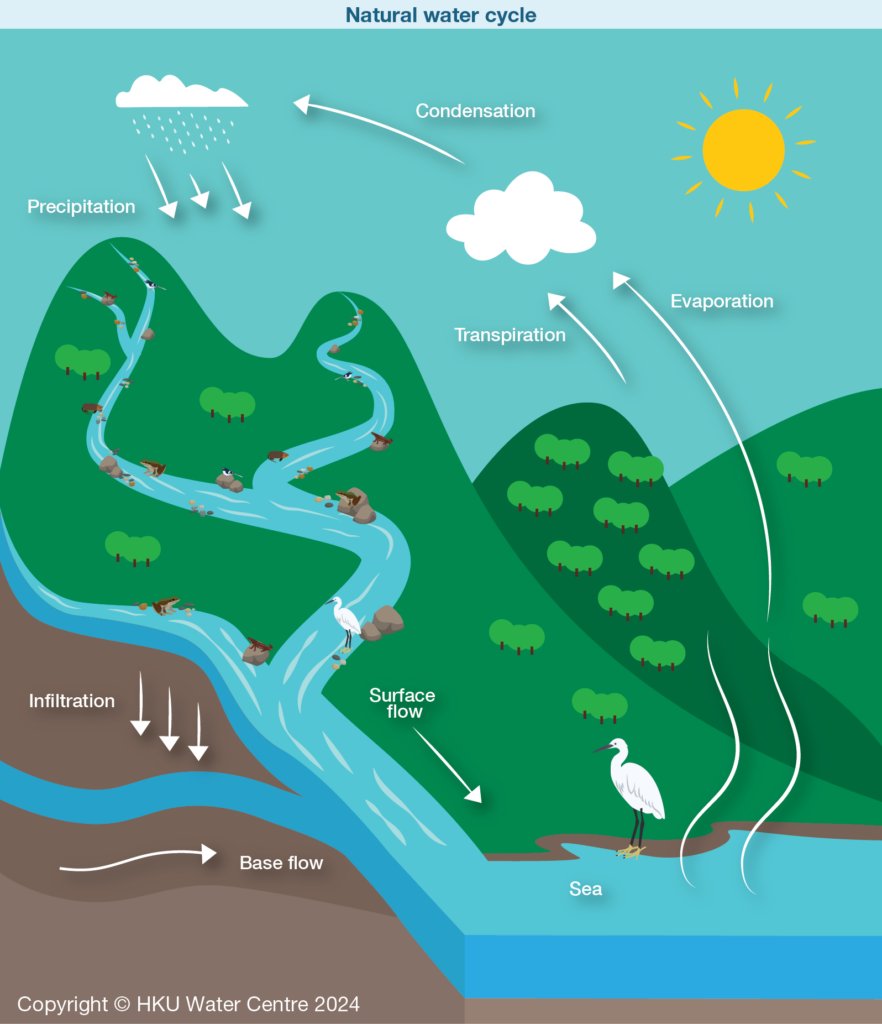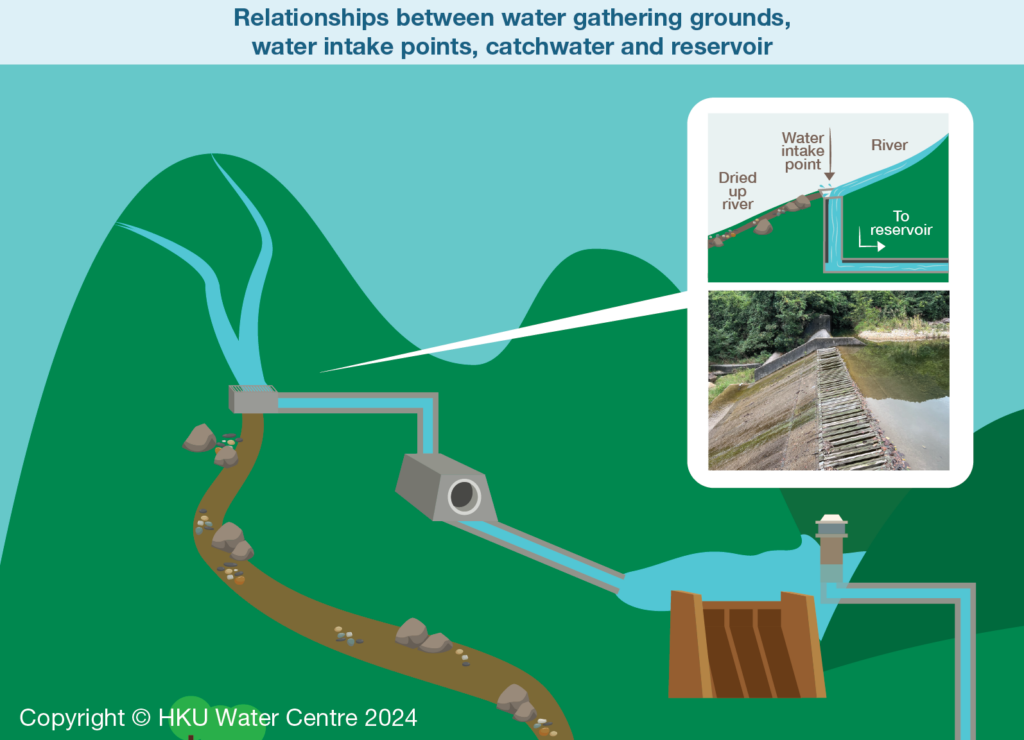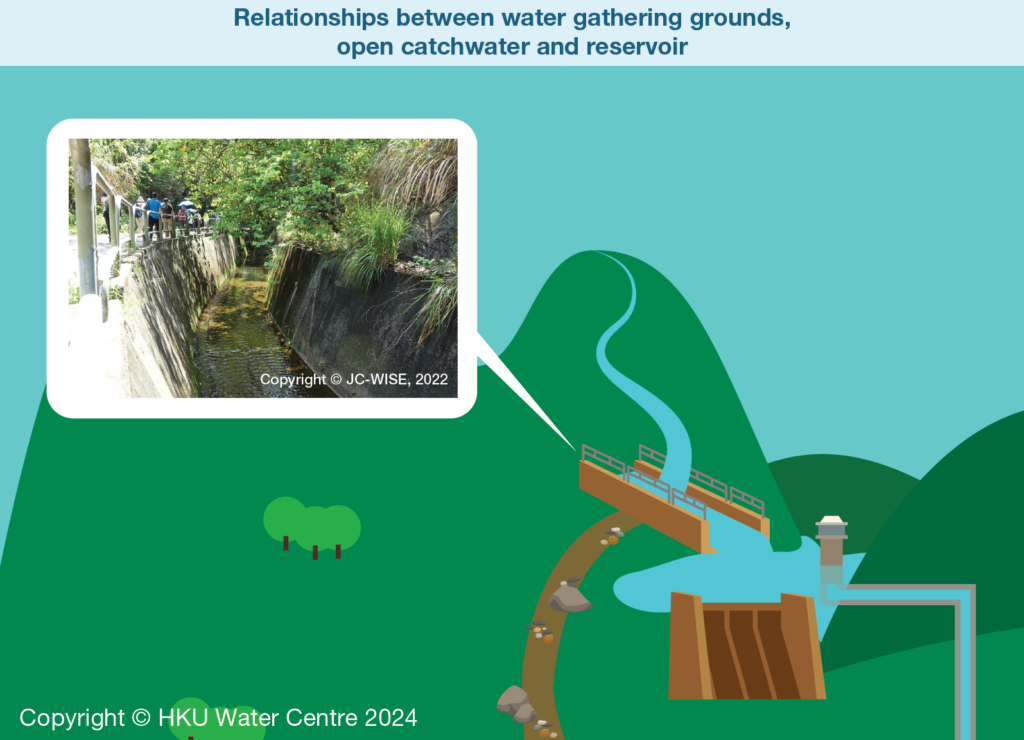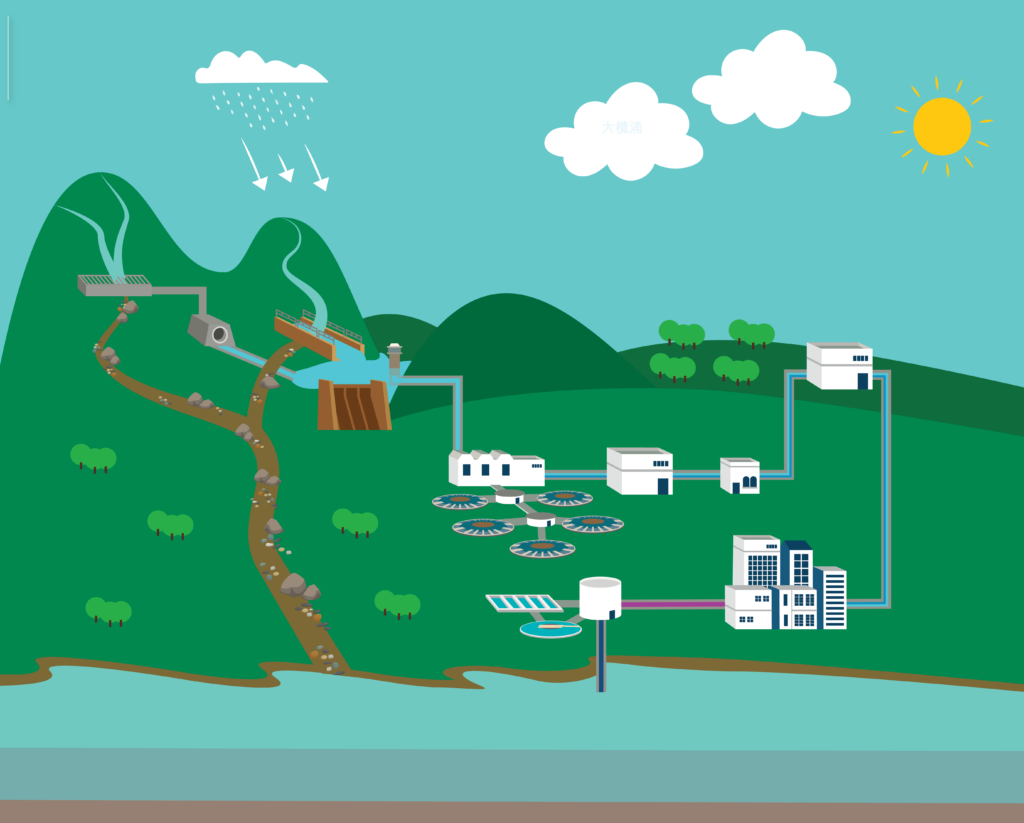
Index
How to cite
Lee, Frederick and Lee, Angela (2024) ‘Water Cycle’, in Lee, Frederick. (ed) Water Resources Information Portal. Hong Kong: Centre for Water Technology and Policy, The University of Hong Kong.
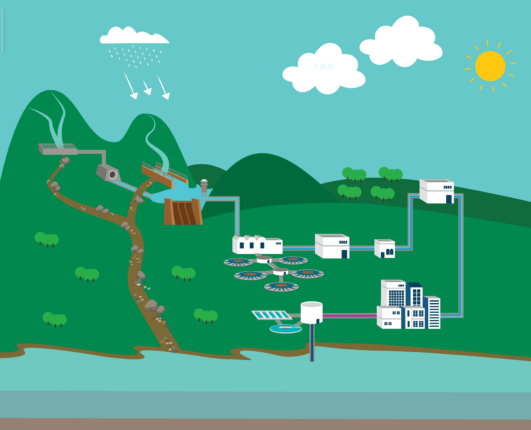
1. Water cycle
Introduction
While all water originates from nature and circulates through the Earth’s interconnected system, human intervention is necessary to modify and manage the natural water cycle to secure adequate good quality freshwater to meet the demand of humans and the ecosystems.
Natural water cycle
1.1 What is the natural water cycle?
The natural water cycle denotes the circulation process of water through the Earth’s interconnected system, which entails land masses, water bodies, living organisms and the atmosphere. In this process, water takes on a different form in each stage.
1.2 Where does rain come from?
Rain ensues from the evaporation of water from soil and water bodies such as oceans, seas, rivers and lakes. It also results from the transpiration of plants.
Evaporated water vapour condenses to form clouds. When clouds are saturated with water droplets, the latter falls to the ground as rain.
1.3 What is a drainage basin?
1.4 Where does rainwater go to?
Rainwater flows over the land surface of a drainage basin as surface runoff, and makes its way to a lake, a river, or an ocean.
Through the processes of infiltration and percolation, rainwater can also travel through the soil to groundwater.
Infiltration is the process by which water on a ground surface is absorbed by soil. Percolation is the process by which water moves through the soil and reaches groundwater.
1.5 How would rainwater affect rivers?
Rainfall directly and indirectly contributes to the flow of rivers.
In a drainage basin, rainfall runs over the land surface as surface runoff or infiltrates the soil, eventually reaching a river.
It can also infiltrate into the ground and become groundwater, where it is taken up by plants or it seeps into streams and rivers as baseflow.
1.6 In what ways is the natural water cycle affected by human activities?
People alter the natural water cycle to extract water for urban development, as well as for agricultural and industrial uses.
1.7 What have human done to alter drainage basins?
One typical example of human intervention in a drainage basin is the construction of reservoirs to capture freshwater for agricultural, industrial and municipal uses.
A reservoir is formed by constructing a dam across a river valley. After the dam is built, the river is intercepted, and water gradually inundates the valley, forming a reservoir.
To increase freshwater supply, diversion structures—such as weirs, intake structures, and catchwaters—are built to redirect river water into a reservoir.
1.8 In what ways have reservoir building actions impacted the natural water cycle?
We build reservoirs, and alter the natural flow of rivers with dams and diversion structures constructed across river valleys. Water is stored in reservoirs.
The construction of diversion infrastructure reduces water availability in a river’s downstream section or even stops the river flow, adversely impacting the downstream’s ecology and related habitats.
Urban water cycle
1.9 What is an urban water cycle?
1.10 What is a water gathering ground?
Water gathering grounds are land areas intentionally designated and altered to collect rainwater for human use, often together with the construction of such water infrastructure as reservoirs, water diversion and storage facilities.
In summary, while a drainage basin is a natural land area where water collects and drains to a common outlet like a lake or a river, water gathering grounds are land areas designated to capture rainwater to satisfy human needs.
1.14 How does rainwater become tap water?
Rainwater collected by catchments flows as surface runoff or streamflow. Water intake points would intercept the streamflow and divert the rainwater to reservoirs through conduits.
Water withdrawn by water utilities from reservoirs would undergo treatment processes at water treatment plants before being pumped to service reservoirs. Service reservoirs are temporary storage and distribution hubs. They distribute treated freshwater to buildings located within their service areas, providing utility customers with clean tap water at home.
1.15 Where does wastewater go to?
Wastewater refers to water that has been used in home, factories or businesses, and which carries pollutants. Collected by sewage pipes, wastewater is conveyed to sewage treatment plants, from which, after treatment, it is released into rivers or the ocean.
1.16 What is sustainable water resources management?
To manage freshwater resources sustainably means that we need to make sure that we have sufficient freshwater to meet the needs of people now and the needs of those in the future.
It also means that we should minimise the adverse impacts of human actions on the climate system, ecosystems, and the natural water cycle when we use freshwater to meet our needs.



